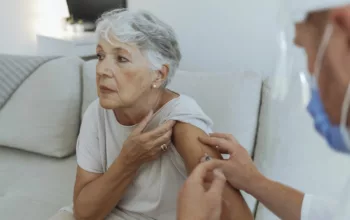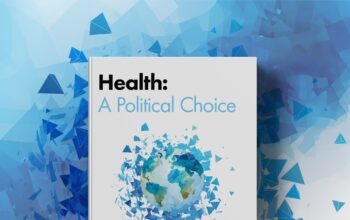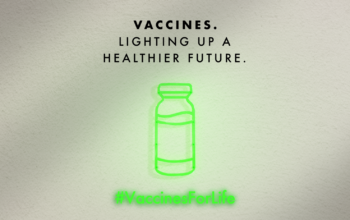Increasing access to vaccines in rural and urban settings with mTech
Laetitia Bigger, Director, Vaccines Policy at IFPMA, spoke with Jenny Sia, Director of Corporate Responsibility at the Pfizer Foundation, about innovations in mHealth technology that are helping to increase access to vaccines. Jenny leads global health grant making and impact investing for the Pfizer Foundation, a charitable organization aiming to promote access to quality health care globally.
The Pfizer Foundation[1] has a program portfolio aimed at piloting and scaling innovation that can improve access to healthcare medicines and vaccines for the most vulnerable and chronically underserved populations in the world. The Foundation, explains Jenny, “wants to improve access to vaccines at the last mile, with a particular focus on technologies that can be employed and ways to equip community health workers with tools that they can use.”
One example of this work is the Pfizer Foundation’s collaboration with the International Rescue Committee (IRC) to validate mReach, a defaulter tracing technology that helps healthcare workers to identify children who have missed a routine immunization and follow up with their caregivers.“ The thing that is really exciting about the IRC collaboration,” shares Jenny, “is that the technology was developed to address a specific problem that many healthcare workers were facing” – ensuring that children receive a full course of immunization.
An impact evaluation was conducted in the Acholi region of Uganda to evaluate whether the mReach application, coupled with targeted community engagement and supportive immunization activities, would increase coverage of key immunization services. Every child born in the study’s intervention arm was registered on the platform and had their healthcare milestones tracked; mobilizing the power of data to improve health outcomes. During the two year project implementation period, a total of 12,949 (74%) out of 17,454 children under the age of one were immunized as result of project activities in Uganda.
The mReach strategy, and its subsequent iterations, has catalyzed our learning around data-informed health programming and targeted community engagement.” – James Tinkamanyire (mHealth specialist, IRC Uganda)
“What has been interesting about this project is the combination of high tech and low tech,” says Jenny. No matter how successful the tech is, without the cooperation and understanding of the healthcare workers, it wouldn’t be possible. To this point, the IRC worked closely with district health officials and community healthcare workers, conducting focus groups and interviews and redefined the technology to meet their needs. For example, healthcare workers did not have access to computers, so the technology was specifically designed for mobile phones. “As much as there can be a technology solution, there still needs to be a community health worker who will to go door-to-door,” reiterates Jenny.
One key challenge remained for the Pfizer Foundation and the IRC. Once you’ve identified which children need follow up, how do you find them? “In a rural setting, often the community health worker will know where everyone is, the distance is far but the population is small and can be easy to identify,” explains Jenny. But with urbanization people become harder to track and it was this problem that attracted Google to the next phase of the project.
Four billion people in the world do not have a physical address. Google’s Plus Codes technology platform is looking to change this, giving map-able addresses to those without them, including in densely populated urban areas. Building on the initial success of mReach, the partners added Google Plus Codes technology to better understand how mReach could be adapted for use in Mogadishu, Somalia. A pilot that ran from January to August 2018 combined the technologies to test this approach, validate the technology and identify additional countries that could benefit.
The pilot aimed to significantly improve the up-take of life-saving vaccinations in an environment where one in seven children under five dies from a vaccine preventable death and it is estimated that only 20% of children under the age of one are vaccinated. During the project period, 4,199 children under one, or 42% of the population in the catchment area, were fully vaccinated. Also as part of this project, health workers were able to identify 5,144 children who had defaulted on their vaccines and vaccinated 4,522 of them (88%) as of August 2018.
The success of the collaboration between the Pfizer Foundation, the IRC and Google has shown how partnerships can breed innovation through new technologies, novel approaches and connecting the right groups together to address a shared goal. “Sharing these technologies and learnings with each other and with local and national governments can help to build a community of practice,” she explains, further increasing access to vaccines to those chronically underserved populations.
[1] The Pfizer Foundation is a charitable organization established by Pfizer Inc. It is a separate legal entity from Pfzier Inc with distinct legal restrictions.
Author






